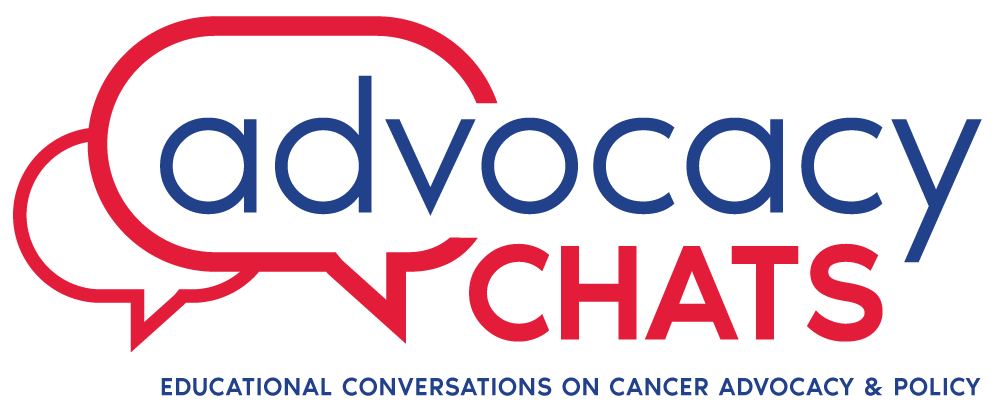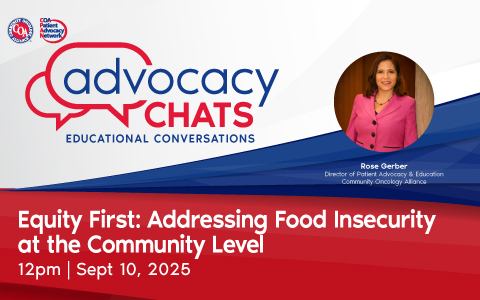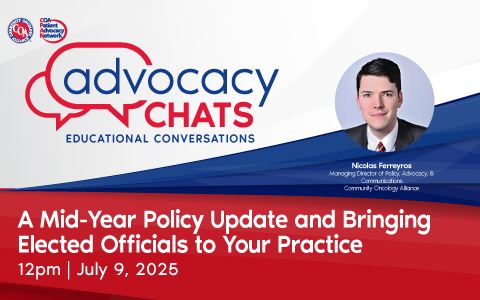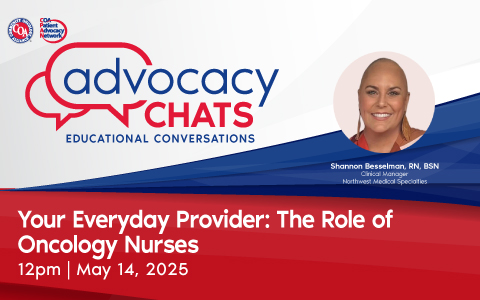Understanding the Cancer Survivor Experience
June marks Cancer Survivorship Month, a time to recognize the strengths and challenges faced by people living with cancer and beyond. This month is especially meaningful for Rose Gerber, MS, the Director of Patient Advocacy and Education for the Community Oncology Alliance (COA), who is not only a leader in cancer advocacy but also a long-term cancer survivor herself. Rose recently hosted a special session featuring Shelley Fuld Nasso, CEO of the National Coalition for Cancer Survivorship (NCCS), to share findings from the latest NCCS State of Survivorship Survey.
The survey offers a valuable look at the real-life experiences of cancer patients, survivors, and caregivers across the United States. It highlights what’s working well, where improvements are needed, and how survivors and their care teams can better support one another. Alongside patient advocacy, there’s a growing recognition for the role of health care professionals, caregivers, and policymakers who contribute to cancer care every day.
The community oncology sector recently held its Hill Day to raise awareness and support for cancer patients and the providers who serve them. This collective effort reflects the broad network of individuals working to improve outcomes, quality of life, and care access for those affected by cancer.
Key contributors to cancer advocacy include:
- Patients and cancer survivors
- Caregivers and family members
- Health care providers such as doctors, nurses, and pharmacists
- Patient advocacy organizations like COA and NCCS
Understanding the voices of those impacted by cancer helps shape policies and programs that matter most to patients.
How the NCCS State of Survivorship Survey Works
The NCCS survey gathers data from a broad range of cancer patients and survivors to offer a realistic picture of their experiences. Ensuring the sample represents the diversity of cancer patients in terms of age, gender, race, ethnicity, and region is a key part of the design.
Survey Design and Participant Recruitment
- The survey includes a national sample of 1,600 patients, selected using quotas to reflect the U.S. population.
- The sample recruitment is informed by data from the American Cancer Society (ACS) and the National Cancer Institute (NCI) to maintain accuracy.
- A separate group, called the NCCS Connected sample, includes 674 patients who are more engaged with advocacy, often through mailing lists or social media followers.
Caregivers and Young Adult Survivors
- Over 550 caregivers participated to provide insights from the perspective of those supporting loved ones.
- The survey also partnered with Stupid Cancer, a group focused on adolescent and young adult (AYA) cancer survivors aged 18 to 39.
- Young adults were intentionally oversampled for a more detailed look at their unique challenges, as this group often faces stronger burdens from cancer than older adults.
Why Two Samples Matter
By surveying both a national sample and the more engaged NCCS Connected group, the study captures a fuller picture. The national sample includes people less connected to support groups or advocacy organizations and who may have different experiences or satisfaction levels. The NCCS Connected patients tend to be younger and more active in their care, which affects how they view treatment and support.
More detailed results and reports, including the full Stupid Cancer analysis, are published on the NCCS and partner websites for those who wish to dive deeper.
Treatment Decisions: Who Holds the Reins?
Treatment decision-making is a crucial part of the cancer experience, shaping patients’ journeys and outcomes. The survey reveals that many patients still place high trust in their doctors to choose the best treatment options – not just to recommend but to decide.
Patients, Caregivers, and Roles in Decisions
- Most patients want to be informed and involved but may still prefer their doctor to make the final choice.
- Caregivers frequently take on the role of researching treatment options, especially when patients feel overwhelmed.
- Some patients actively advocate during consultations to get the best care possible.
Differences by Age, Race, and Engagement
- Patients aged 65 and older are more likely to defer to their doctors.
- Younger patients and those connected to NCCS show greater involvement in researching and deciding on care.
- Black, Hispanic, and urban patients report higher rates of advocating to receive the best care.
- Women and lower-income respondents also express a stronger need to speak up for themselves.
A Trend Over Time
Looking at responses over the last five years, the “doctor knows best” mindset dipped during the 2021 pandemic but has since risen again to over half of patients relying mainly on their doctors for decisions. The NCCS Connected group breaks from this pattern, with only 30 percent relying solely on the doctor.
Second Opinions: A Low but Important Number
Only about 29 percent of patients reported seeking a second opinion during diagnosis or treatment. The groups most likely to seek one include younger adults, Hispanic patients, LGBTQ individuals, and those with stage 4 cancer.
When patients chose not to get a second opinion, the biggest reason was trust in their initial doctor. Another common reason was not wanting to delay the start of treatment. NCCS plans educational campaigns to encourage second opinions, emphasizing that doctors generally support this, and it doesn’t insult the first provider.
Key takeaways about second opinions:
- Most doctors welcome and encourage second opinions.
- Getting a second opinion can confirm a treatment plan without needing to change doctors.
- Patients shouldn’t feel uneasy asking for another expert opinion.
Clinical Trial Participation: Challenges and Opportunities
Clinical trials offer access to new treatments, but participation remains low.
Participation Rates and Motivations
- Around 9-10 percent of patients report taking part in clinical trials, a rate consistent with past years.
- The primary reason for joining a trial is a doctor’s recommendation.
- Many participants want to contribute to medical research.
- Younger patients, Hispanic patients, and those receiving therapies like immunotherapy have higher trial participation rates.
Why Patients Decline or Don’t Join Trials
- The most common reason for not participating is never being offered the option to participate.
- Other barriers include concerns about eligibility, side effects, treatment type, and cost.
- Younger and Hispanic patients report being asked more often than older or other racial groups.
Advocacy and Structural Barriers
Health care providers often initiate conversations about trials, but overall participation has not improved much in decades. This suggests the need for systemic changes, not just patient education.
Community oncology practices sometimes actively offer trials, but challenges remain in ensuring all eligible patients hear about opportunities, especially in diverse communities.
Experiences with Cancer Care: Satisfaction, Side Effects, and Financial Challenges
The survey dives deep into how patients and caregivers feel about the care they receive.
Satisfaction at Different Stages
- Most patients express high satisfaction with care during diagnosis, treatment, and post-treatment.
- Younger patients consistently report lower satisfaction by nearly 20 percentage points compared to the overall group.
- Caregivers’ satisfaction scores are also lower than patients’, likely because they see care gaps and difficulties more clearly.
- Among patients with stage 4 cancer, satisfaction with end-of-life planning is lower. Caregivers who recently lost loved ones report higher satisfaction in that area.
Side Effects That Affect Patients Most
Patients frequently experience:
- Fatigue
- Fear of cancer recurrence
- Depression and anxiety
- Other mental health challenges
Women report higher rates of most side effects except sexual concerns. Young adults report even greater side effect burdens, including emotional distress.
Many symptoms like nausea receive better support, but issues such as fatigue and fear of recurrence often go under addressed in cancer care.
The Financial Strain of Cancer
- 44 percent of patients report at least one financial hardship.
- Nearly all young adults (90 percent) experience financial issues.
- African American patients (55 percent) and Hispanic patients (68 percent) report higher rates of financial difficulties.
- New survey questions reveal struggles to afford prescriptions, insurance covering screenings, and switching or stopping medications due to cost.
Balancing Work and Cancer Care
- Patients are more likely to want to work during treatment, seeking normalcy.
- Caregivers feel they often have to keep working, even if they would prefer not to, to support their loved ones.
- About 15 percent report that cancer treatment completely prevents them from working.
- On average, patients miss 21 work hours per week due to treatment effects, nearly half a full-time job.
Supporting patients and caregivers in managing work during treatment could improve their quality of life and financial stability.
Post-Treatment Care: Follow-Up and Survivorship
Survivorship care is a vital, sometimes overlooked part of the cancer journey.
Receiving Post-Treatment Care
- Two-thirds of patients within five years of treatment report currently receiving post-treatment care.
- A concerning one-third report no follow-up care, often because their doctor told them it wasn’t necessary.
- Most survivors need some level of follow-up to monitor for recurrence and manage side effects.
Who Manages Survivorship Care?
- More patients report their oncologist as the main provider for post-treatment care than their primary care doctor.
- In recent years, there’s been a sharp drop in the number who say their primary care provider handles their survivorship care.
- For those five or more years out from treatment, care responsibility is split more evenly between oncologists and primary care doctors.
There is ongoing discussion about the appropriate balance because oncologists focus on active treatment cases and may not always have time for long-term monitoring.
Patient Willingness to See Primary Care Providers
Only about a third of patients are willing to rely on primary care for their post-treatment follow-up. Those more connected to advocacy groups tend to prefer specialists due to their awareness of cancer’s complexities.
Educating both providers and patients on survivorship care options is essential for improving long-term health outcomes.
Looking Ahead: Questions and Advocacy Efforts
During the recent session, several questions were raised by the community, including the idea of surveying health care providers about how often they discuss clinical trial opportunities with patients. This could help improve educational programs aimed at health care professionals.
The discussion also highlighted the need to reduce structural barriers to trial participation and improve support systems that allow patients to work or manage financial hardships during treatment.
Cancer survivorship is a journey shaped by medical care, support networks, and informed choices. Surveys like NCCS’s provide meaningful data to guide efforts in making that journey as smooth and hopeful as possible.
CPAN Advocacy Chats are regular virtual 30-minute educational conversations about cancer advocacy and policy with a guest speaker invited to discuss issues important to patients and advocates. Summaries of previous Advocacy Chats are available on the CPAN website.
Past Advocacy Chats





